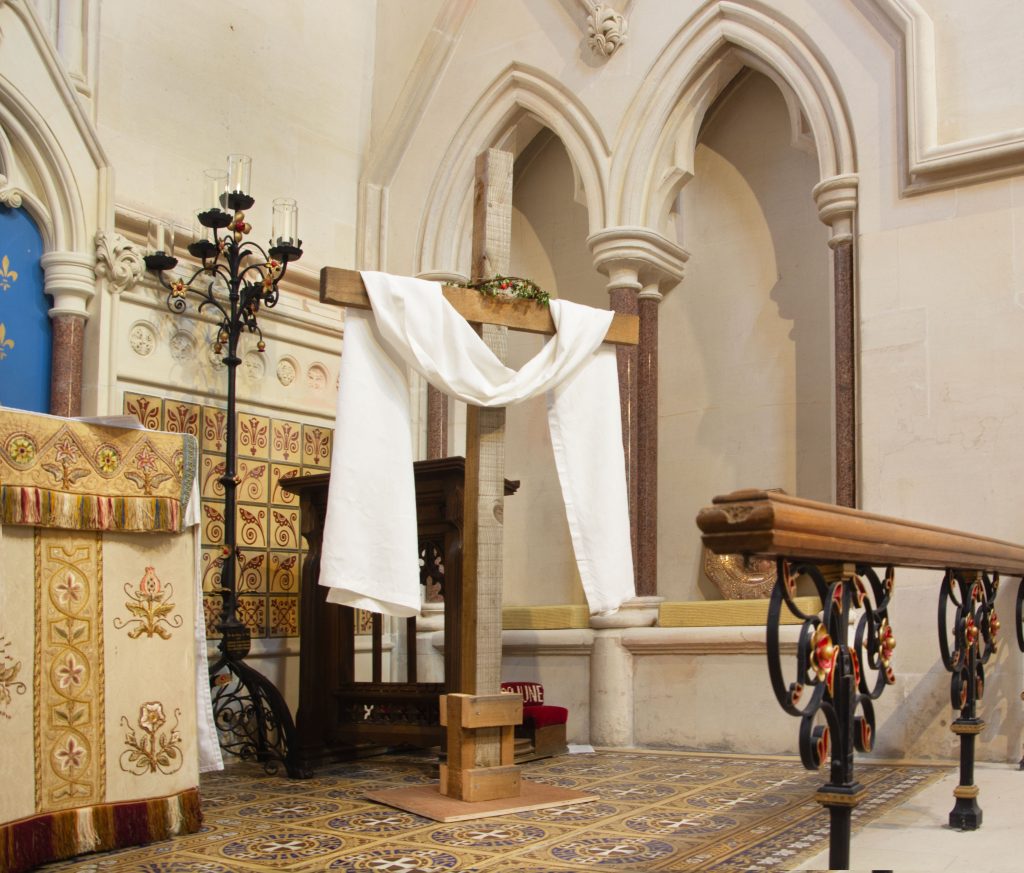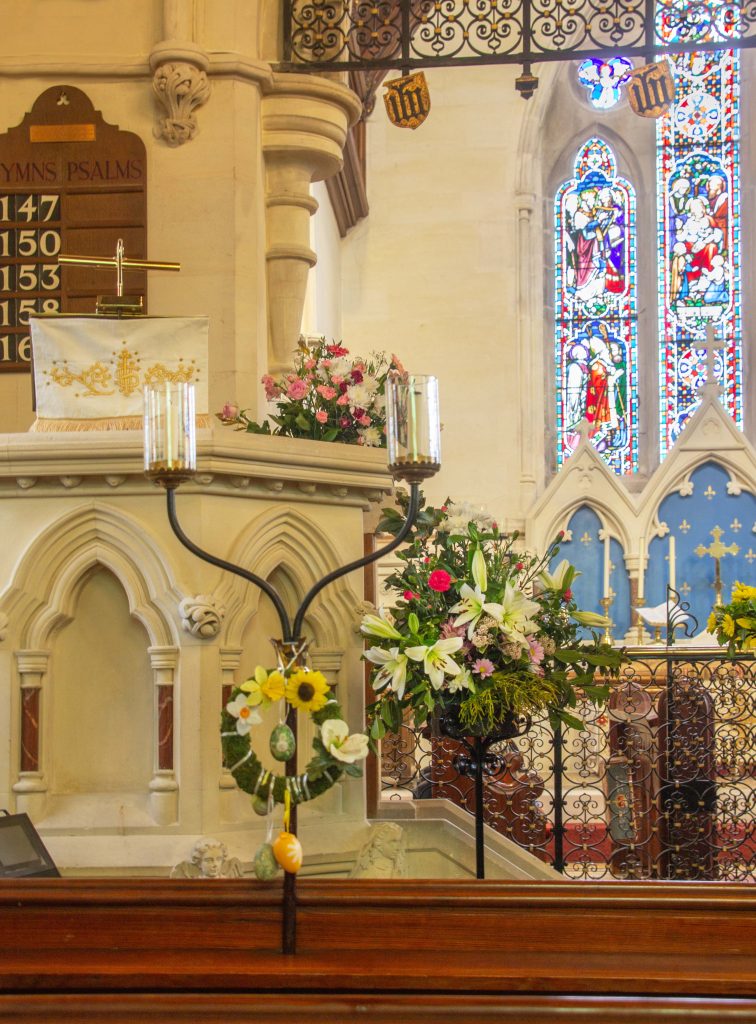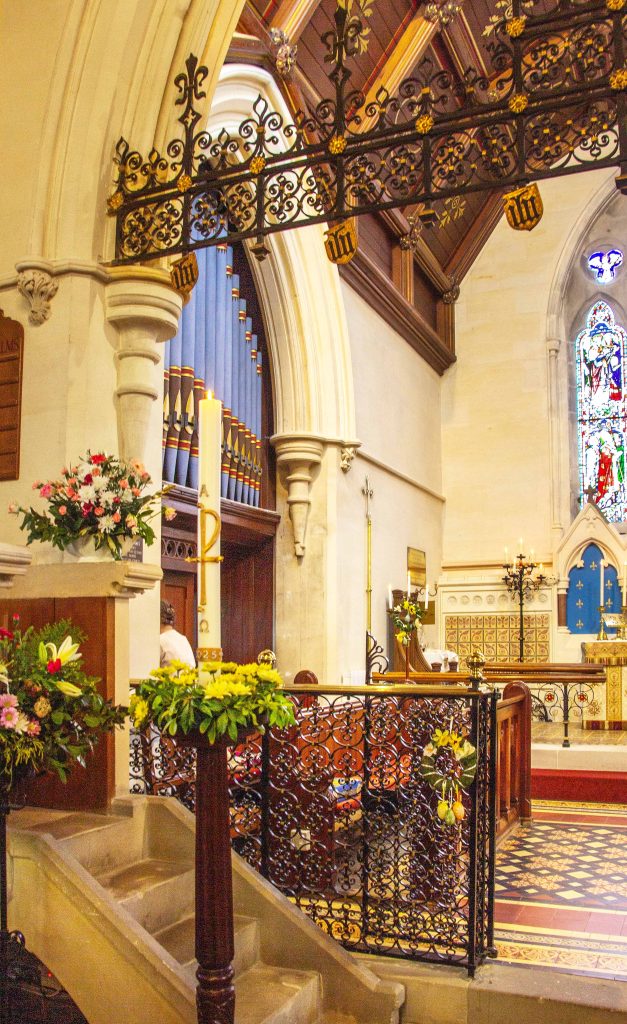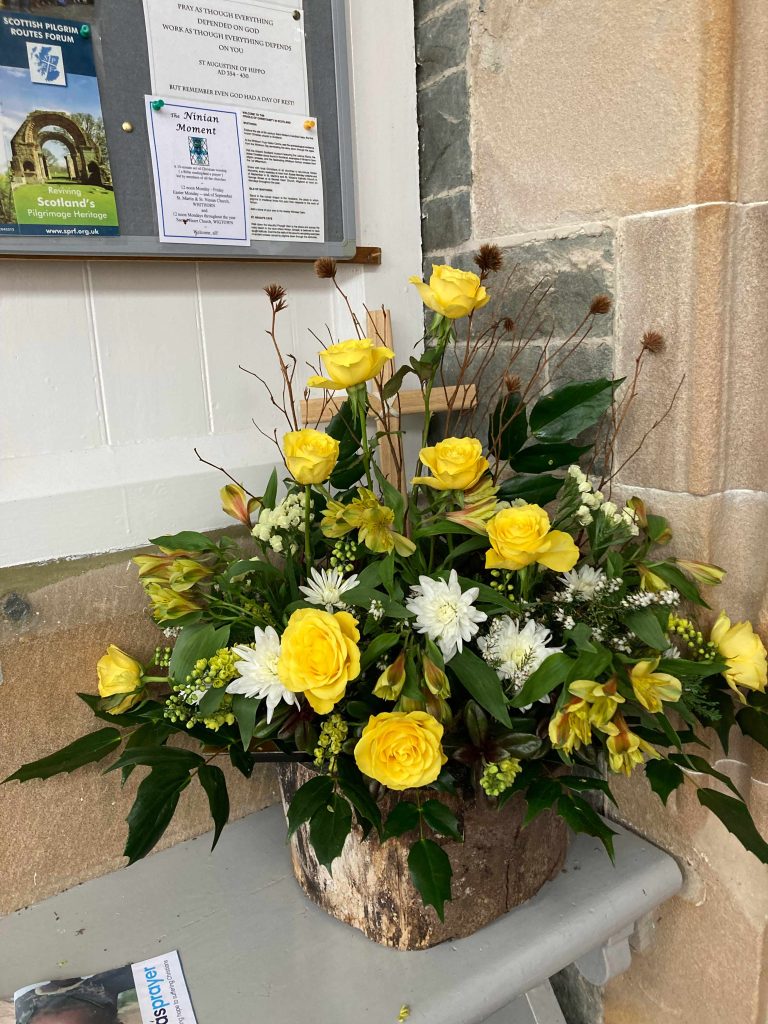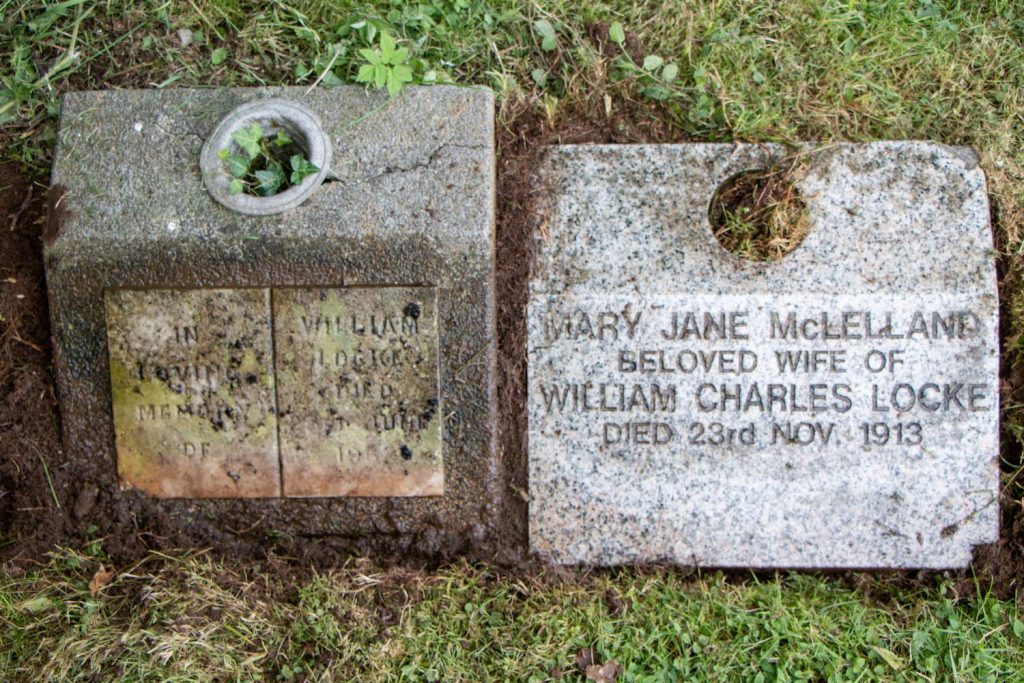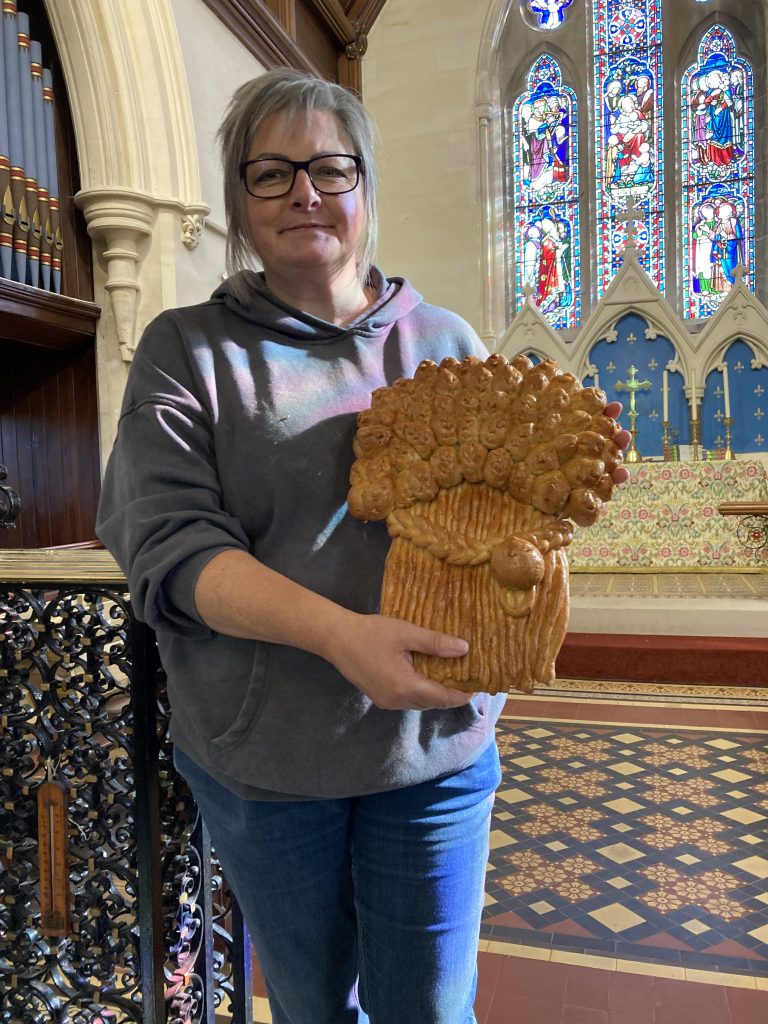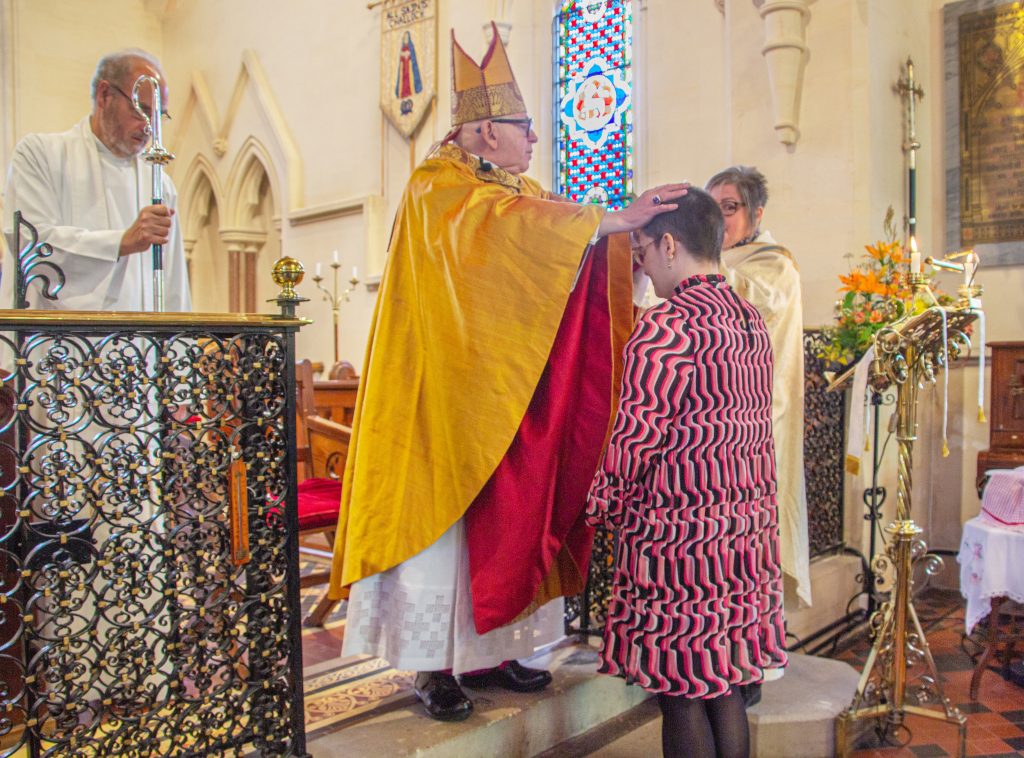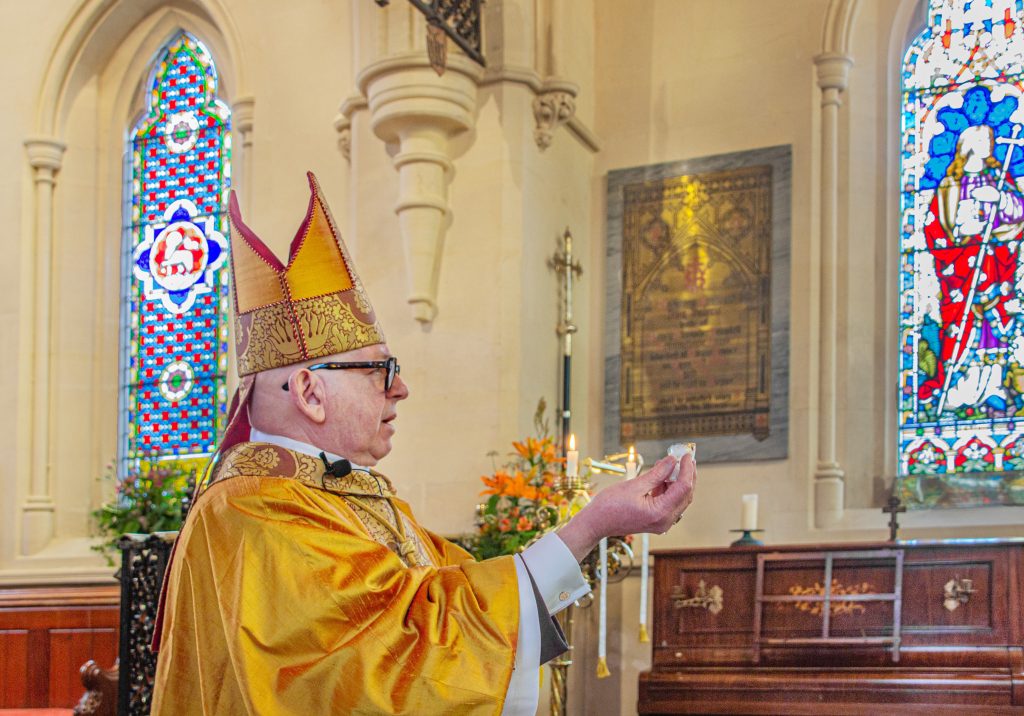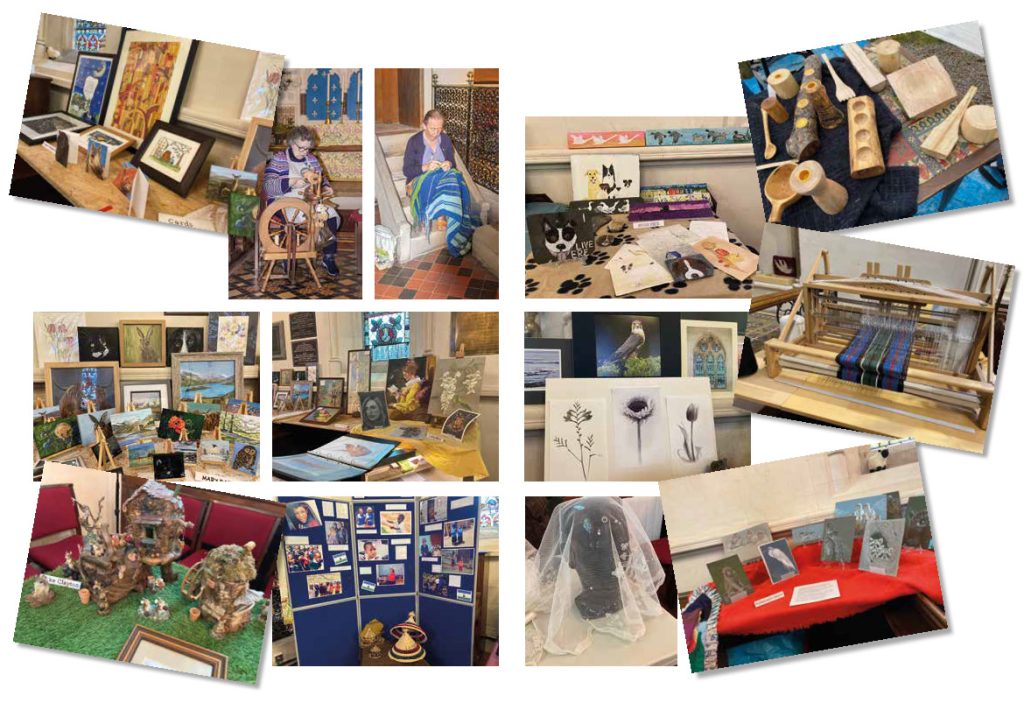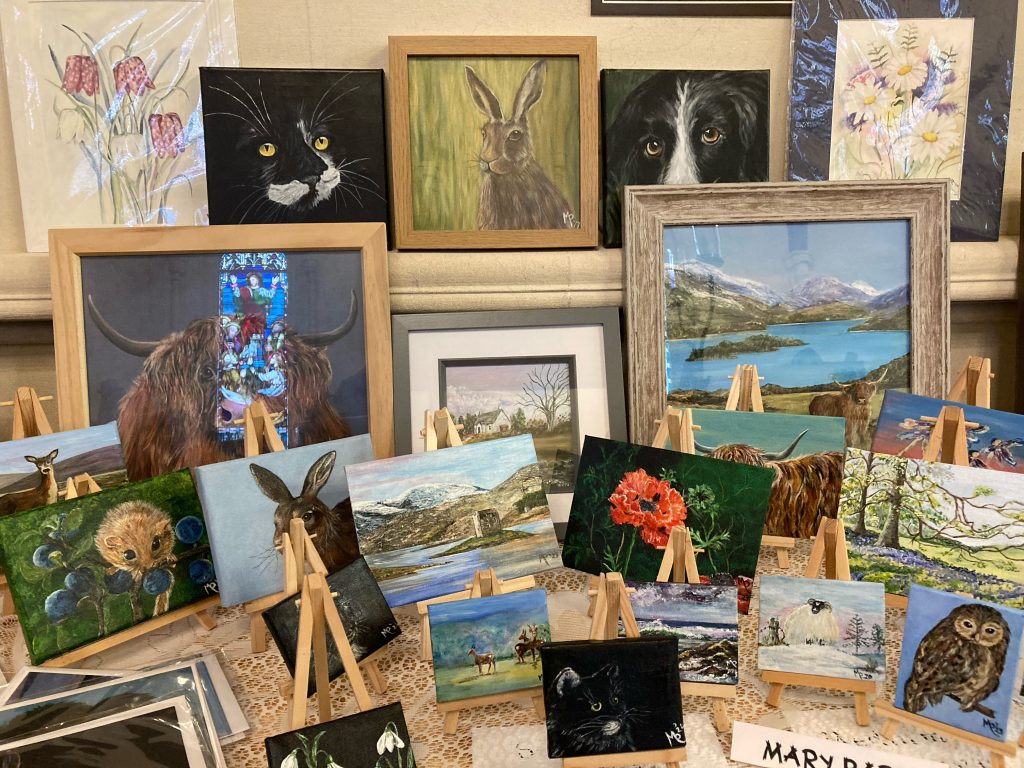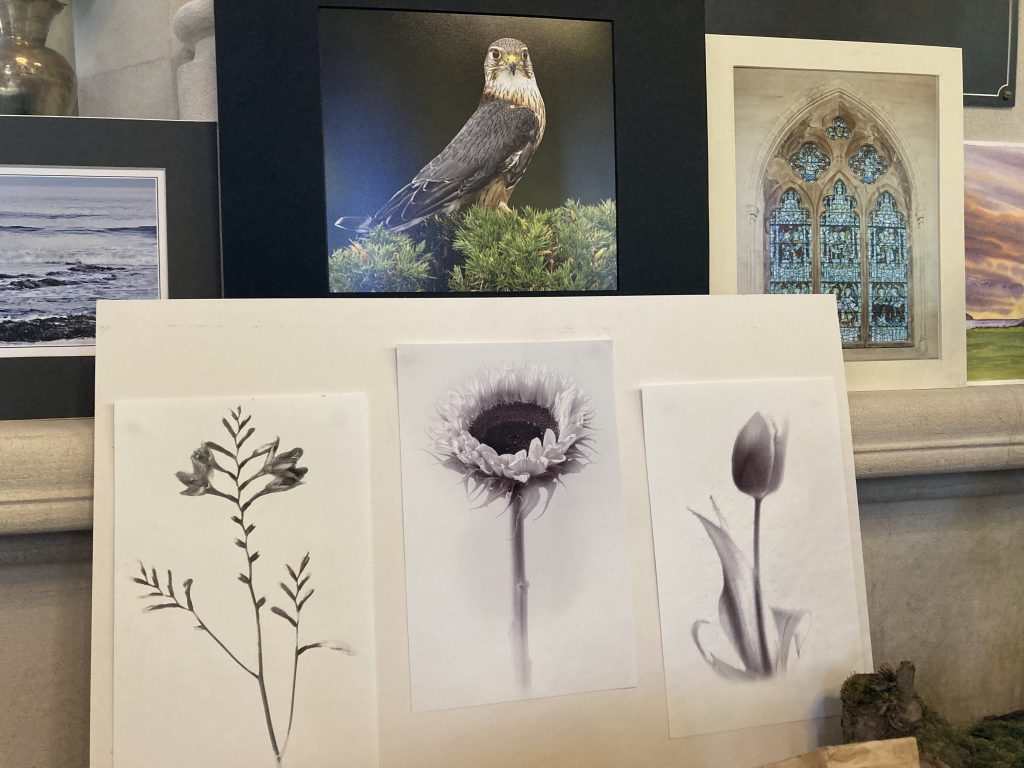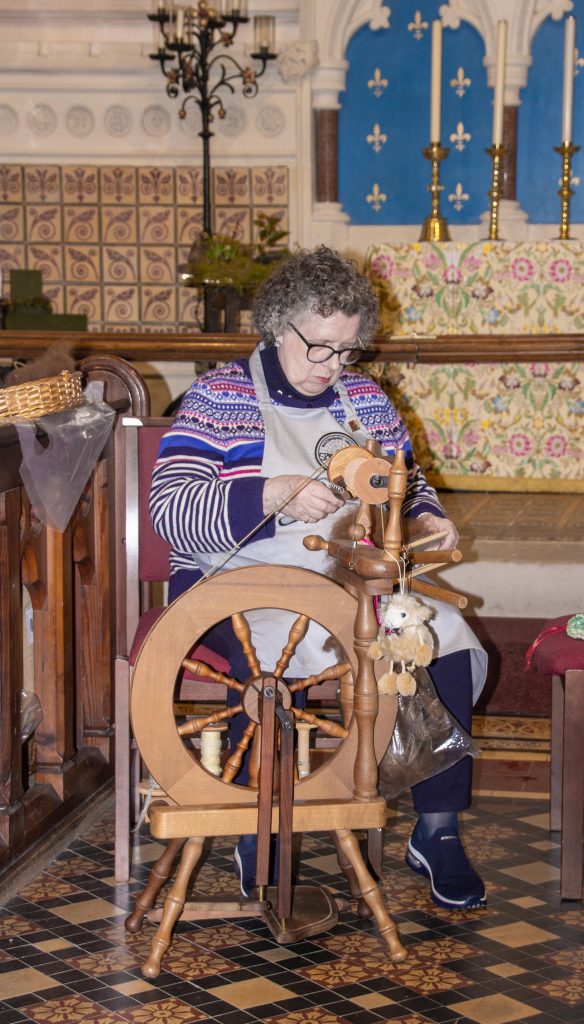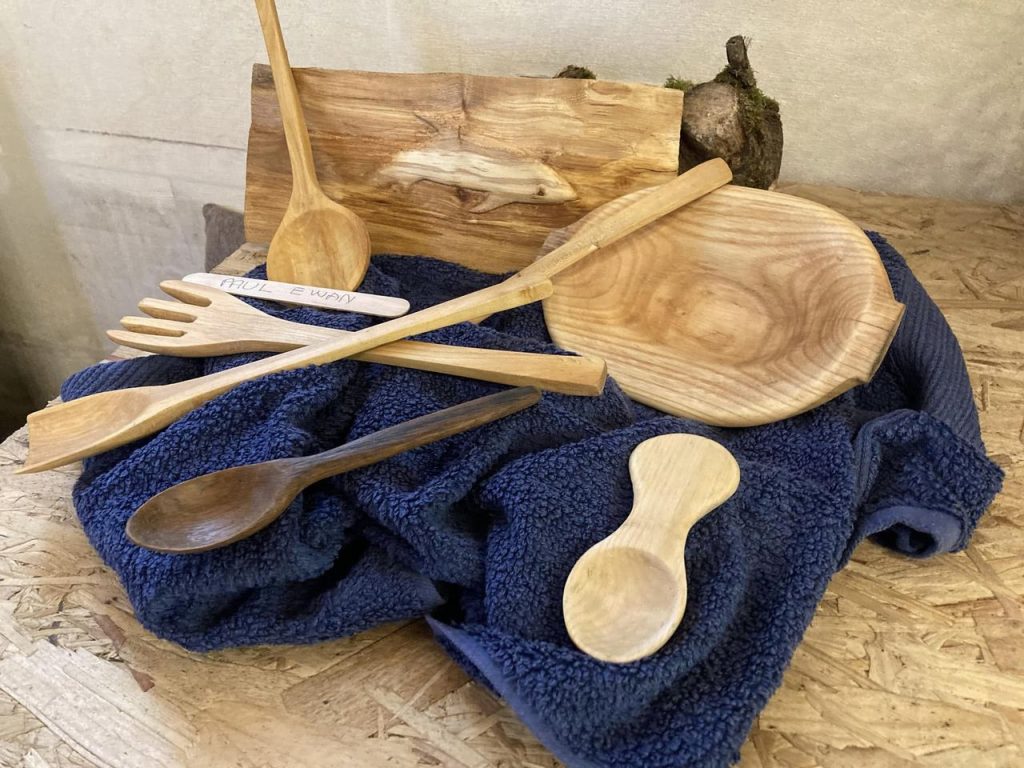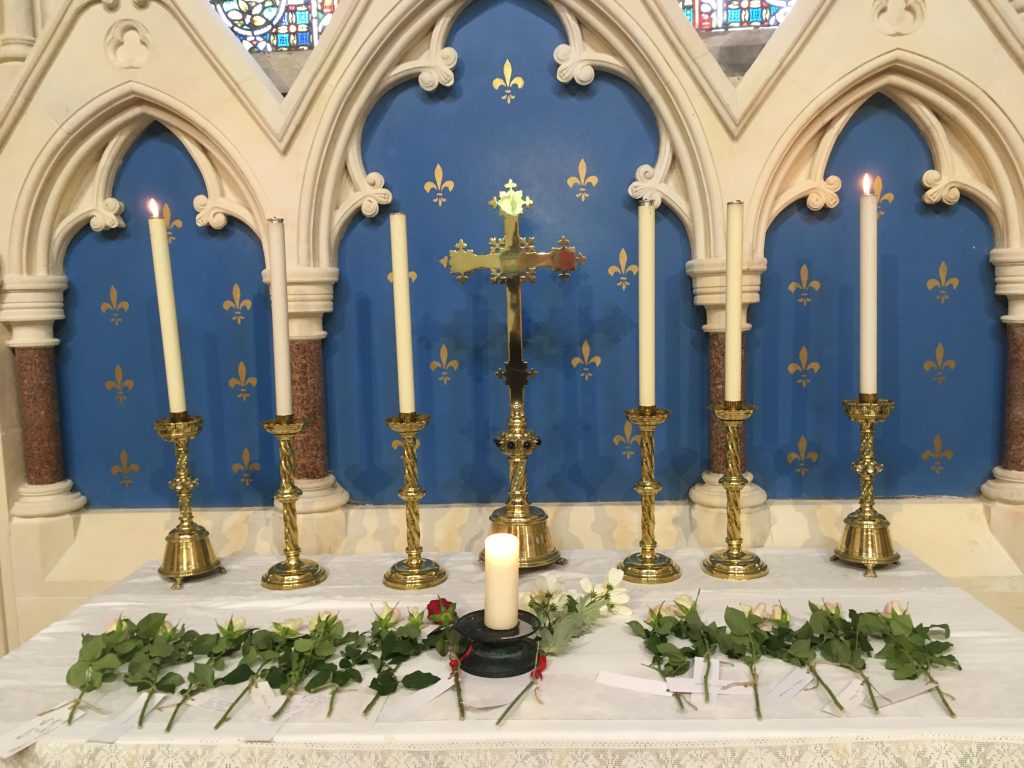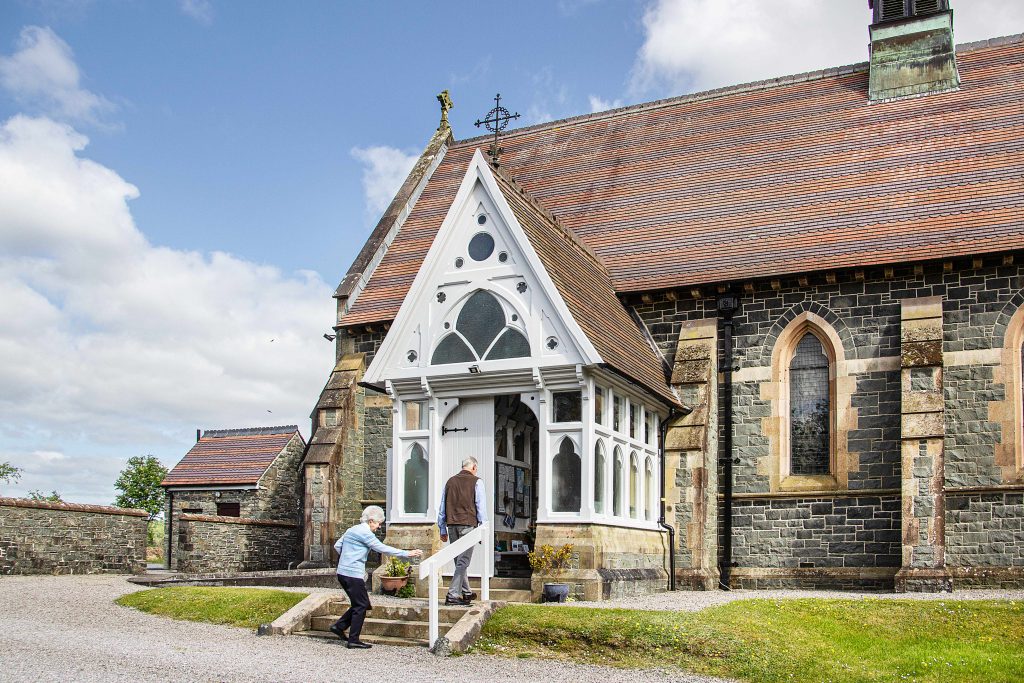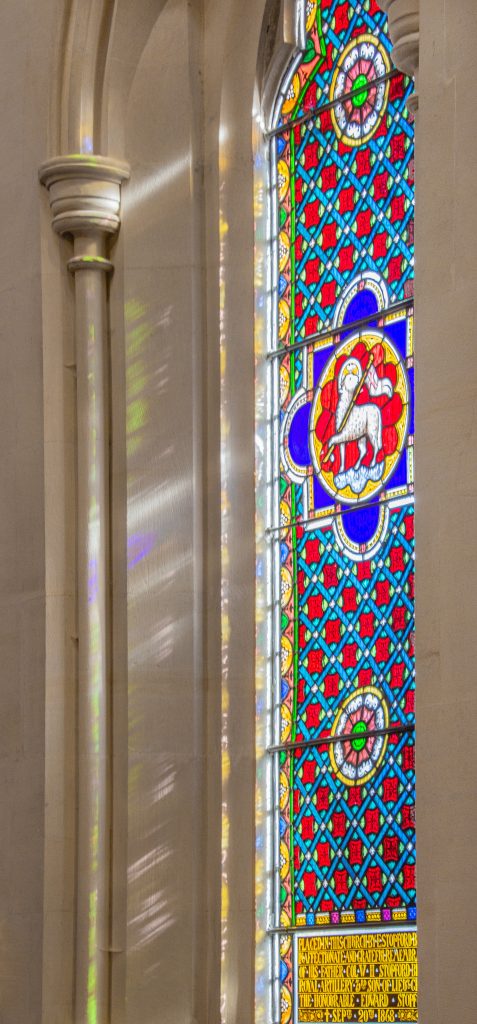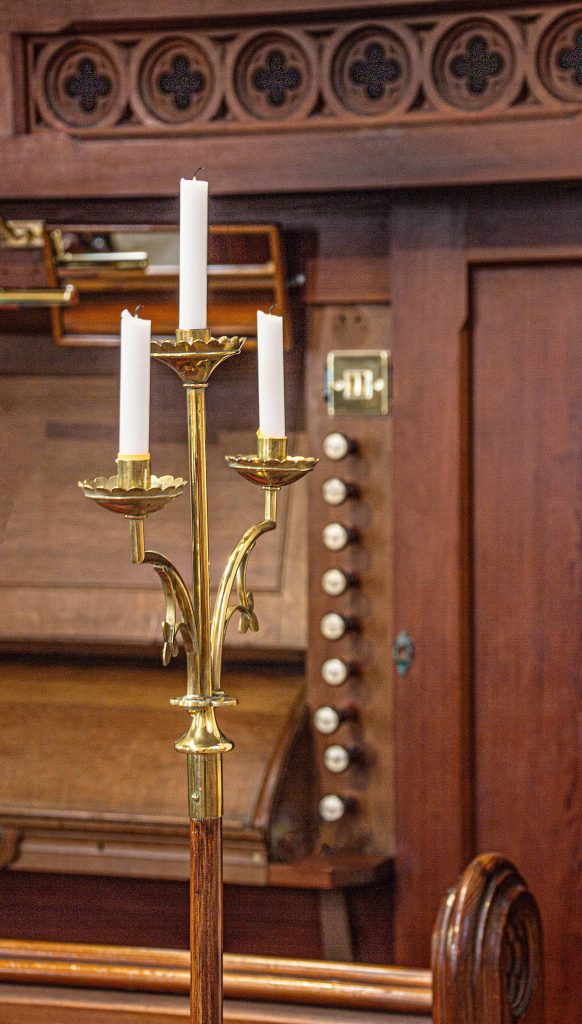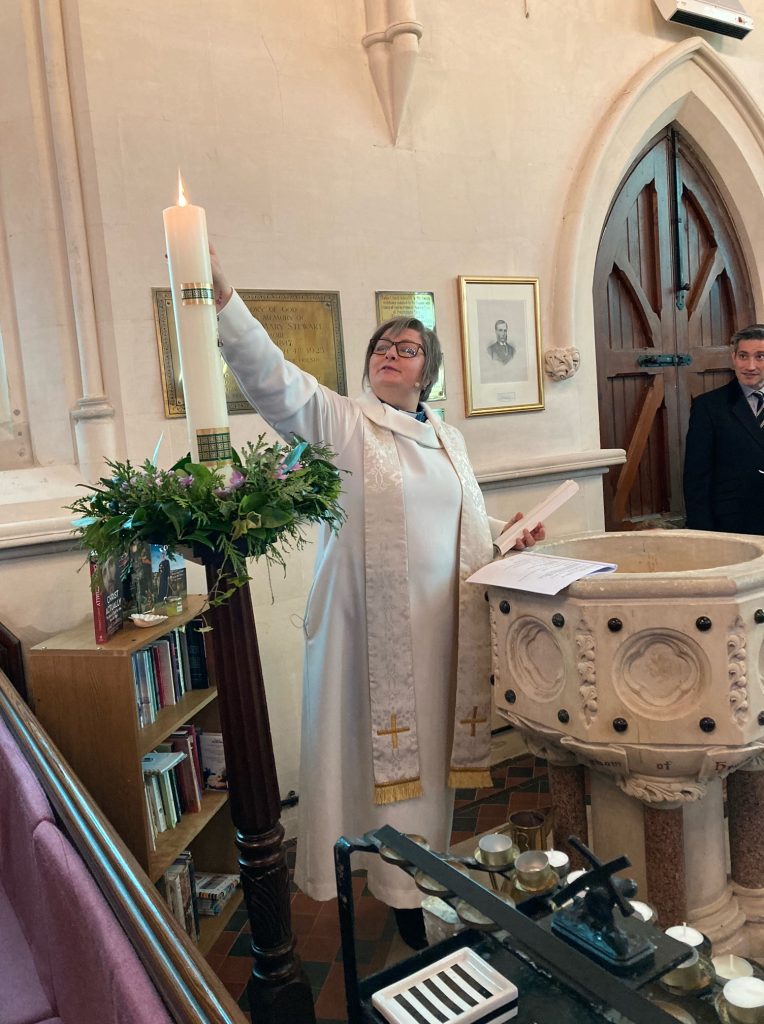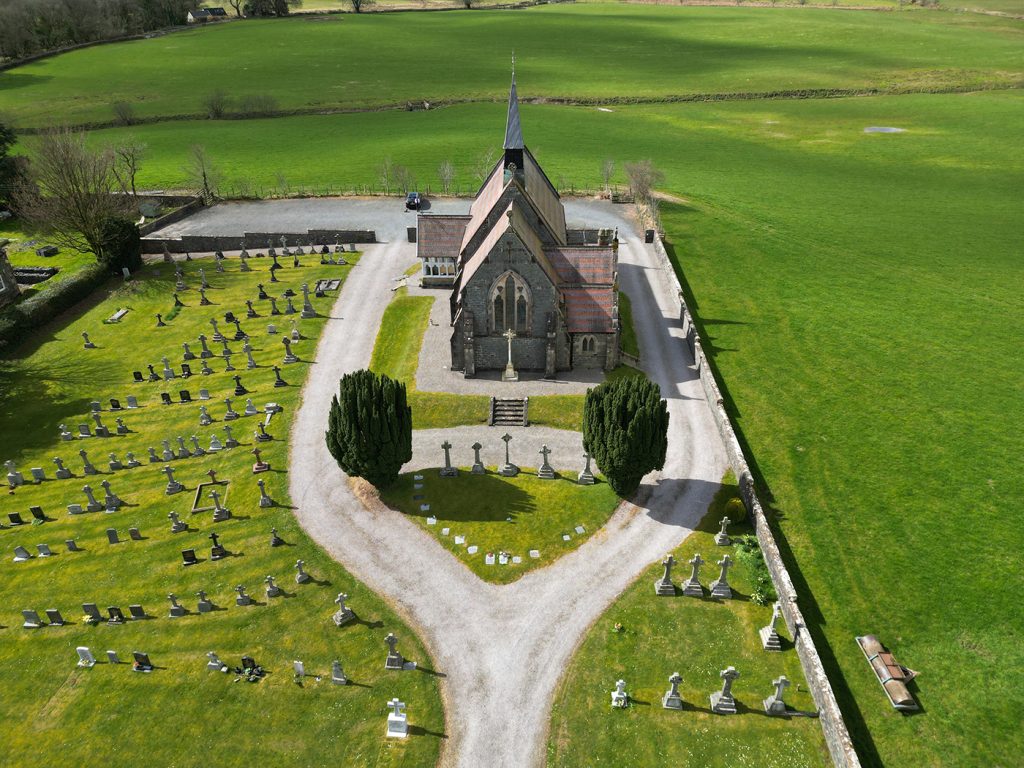
Now established as a Grade A Listed Building, All Saints’ foundation stone was laid on the 16th November 1871 and the church was consecrated within the octave of All Saints on 8th November 1872 by Bishop Wilson of Glasgow and Galloway, assisted by Bishop Eden of Moray, Ross & Caithness, Primus.
It was originally built as the private chapel of Mr Edward James Stopford-Blair of Penninghame House. On his death in 1885, in his will, he bequeathed the rectory buildings, now sold to a private owner, and the church to the Diocese of Glasgow and Galloway.
All Saints was designed by the architects, Habbershon & Pate of Bloomsbury, London and is said to be one of the best examples in Scotland of a small Victorian church.
Since its consecration, the church has also had many associations with the Earls of Galloway and the font and fine brass lectern were gifts from a former Earl. That family was involved with the building of St. Andrew’s ‘chapel of ease’ in Newton Stewart, which although part of All Saints for many decades, is now the ‘chapel of rest’ of a local undertakers.
All Saints seats about fifty in the nave and twenty in the choir. There are ten stained glass windows, and seventeen memorial plaques. The pine altar, usually covered by fine altar frontals, stands in the stone reredos with its gothic arches. The wrought iron and brass rod screen was given by Mrs Elizabeth Stopford-Blair in memory of her husband, the provider of the church. In 2016, some of the rear pews were removed in order to provide a welcome area for the community and is a very popular addition.
The organ is a fine example of a manual ‘tracker’ and was built by Harston of Newark-on-Trent in 1881, having an electric blower added by the James’s of Killiemore following the death in 1956 of Hew Lawrence James, aged 22, in whose memory it is dedicated. The organ was restored in 1992, and appears to be the only example of Harston’s work still in original condition in use in Great Britain.
The peal consists of three bells which were re-cast by Taylors of Loughborough at the charge of William Malcolm Hamilton of Craichlaw. They were dedicated on the feast of the Epiphany in 1924 to the memory of his mother and sister. The bells were tuned, restored and electronically mechanised by the same company from a generous donation by Berkeley Stewart of Barraer in memory of his wife Sandra, and dedicated on 13th August 1989. Mr Stewart also contributed towards their renovation in 2023.
Within the boundaries of the charge, which is one of the largest in the area, is Whithorn, one of the most sacred places in Scotland. In AD 397, St. Ninian landed at the Isle of Whithorn and built the first church known as Candida Casa from where he evangelised large parts of the southern lowlands and uplands.
From it beginnings as a private chapel, All Saints is now a much-loved popular church, which draws its congregation from as far as twenty-five miles away. It is evolving to meet the needs of communities nowadays but never loses sight of being a sacred space where we can ‘worship the Lord in the beauty of holiness’.

